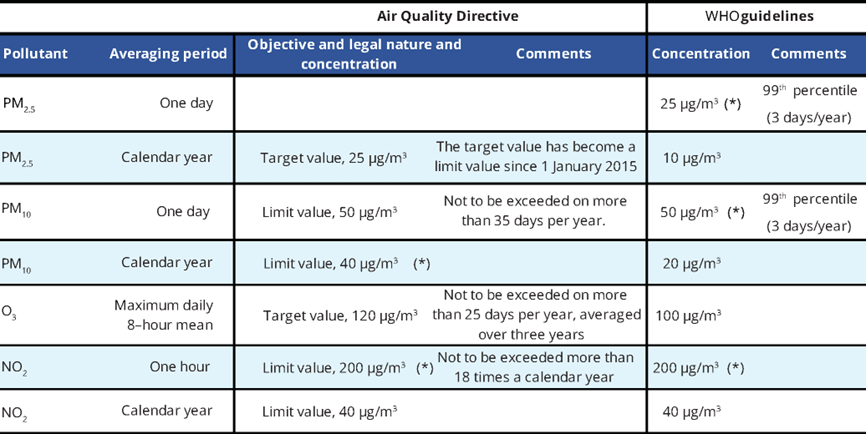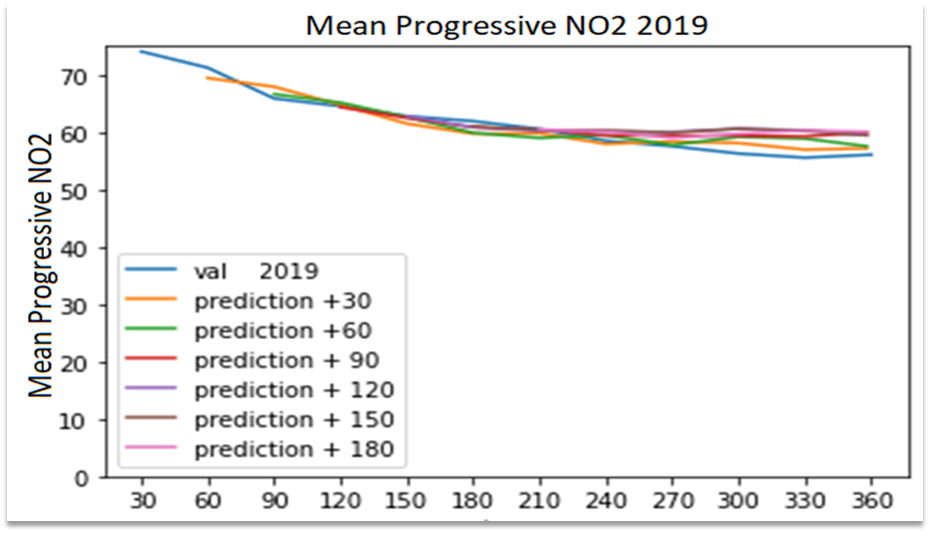In recent years, the concentrations of air pollutants have reached critical values in the majority of industrialized cities over the world. These pollutants are dangerous for people’s health and the environment. The European Union has set limits for the concentration of the yearly mean value of NO2 which must not exceed 40 µg/m3. The solution developed provides accurate long-term prediction up to 180 days in advance, of the progressive mean value of NO2 with a precision needed to enable decision makers to perform corrections.

In detail this solution:
- is based on data from a set of Internet of Things (IoT) sensors taking into account measures of: pollutants, traffic flow, weather and environmental variables directly acquired on the field;
- the machine learning AI predictive models are able to achieve results in this field;
- performs predictions from 30 days up to 6 months in the future from the present moment;
- allows the realization of NO2 monitoring dashboards and solutions for computing and predicting progressive mean value of the pollutant to enable decision makers to perform corrections in time to avoid overcome the EU target limits.
The Metropolitan City of Florence since 2014 did not respected the limit imposed by the European Union for the mean yearly value concentration of NO2 of 40 µg/m3 that is assessed in the critical points of the cities, the major roads.
Since it is a long-term average, it is particularly complex to correct by imposing last minute traffic restrictions, even a drastic total closure for a number of days risks to create a marginal reduction on the progressive mean or on the yearly mean value. On the other hand, the effects of strategic modifications on the road network that led to a marginal reduction on the immediate can be difficult to monitor.
There is an extensive literature addressing the problem of air pollution prediction, but the majority of the work are based on short-term periods of hours or at most a couple of days. The presented solution has been used to monitor the effects of long-term strategies to reduce the mean yearly value concentration of NO2 providing the predictions up to 180 days in advance.

For the problem of long-term prediction the AI based solution provides state of the art results with a mean absolute error of 1.21 µg/m3 for the 30 days ahead prediction up to 2.37 µg/m3 for the 180 ahead prediction relating on data directly acquired on the territory. The resulting solution is based on deep learning techniques based on LSTM. The precision in terms of MAPE is of 2.2% for 30 days prediction, and 8% for 180 day predictions.
With Snap4City platform it is possible to get data acquired by the IoT sensors on the territory and elaborate in real time using the AI models developed for the long-term prediction of NO2 concentration. The predictions can be used to develop monitoring dashboard decision makers.
The main component of the dashboard is the trend based on the AI predictions up to 180 days in advance from the current day. In Red are reported the actual mean progressive values of NO2 and in blue the predicted values 30, 60, 90, … 180 days in advance. In green the EU limit of 40 µg/m3.
Partners: Snap4City, TRAFAIR CEF
Please read and cite the work as: (2021). Long Term Predictions of NO 2 Average Values via Deep Learning. In International Conference on Computational Science and Its Applications (pp. 595–610).
https://www.snap4city.org/download/video/long_term_predictions_of_no2.pdf